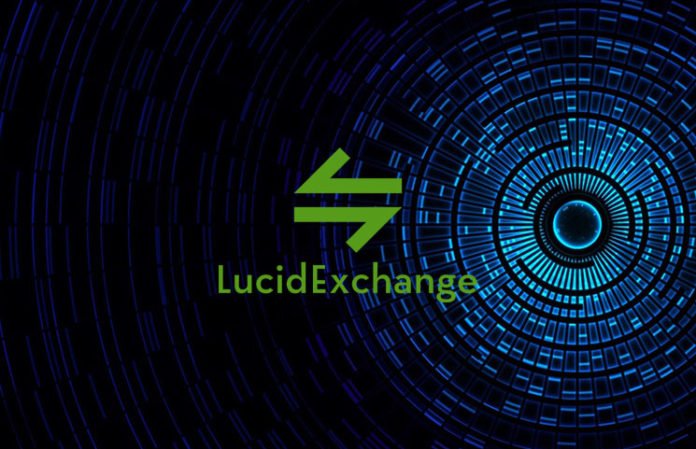
The trading industry has been known to be both daunting for juniors and exhausting for long-time traders. Often, these tedious aspects can be completely eliminated, notably with the blockchain technology. This also applies to derivatives trading as a new blockchain startup – LucidExchange - has found a way to do cut out the middle man.
What is a Derivative
A derivative is a financial contract whose value is dependent upon an underlying asset. This commonly takes the form of stocks, indices, bonds, interest rates, commodities, and currencies. In other words, a derivative does not hold any value; its value is obtained from the value of the underlying asset.
The Purpose of Derivatives Trading
Concurrently with any economy, asset value will rise and fall. Again, this includes stocks, bonds, and currencies. These fluctuations represent a risk that can either help an investor to turn a profit, or it can cause a loss. Based on this risk, derivatives trading can be used for the purpose of speculation (high-risk) or hedging (risk-averse)
Traders can guess the changes that will affect the price of an asset and if guessed correctly, can make substantial profit. For example, a trader can sell a contract that includes an asset whose price is expected to drop in the near future. The same applies to hedging. When a derivative is traded for hedging purposes, the risks that come with the underlying assets are also transferred.
The Process of Derivatives Trading
The strategies used in derivatives trading are distinct from the ones used when trading on the stock market. On the stock market, when you expect a rise in the price of an asset, you ‘buy’ shares with the hope of increasing the value of your investment. However, the opposite is the case when you are trading derivatives.
If you are thinking of join in this industry, you must first create an account that allows for derivatives trading. Next, you have to arrange your mandatory margin amount. This amount cannot be withdrawn until your first trade has gone through. Sometimes, the mandatory margin amount changes due to fluctuations in the underlying assets. This means that at the beginning, you should put more than the margin amount in their account.
Once this is done, you can select the stocks and contracts that you want to trade. Remember to take into consideration the amount in your account throughout this process, the price of the asset and the contract, as well as any additional costs. After finishing these steps, wait for the expiration of the trade to settle. Once the trade has expired, you will have the option to either pay the outstanding balance, or enter an opposing trade.
The Problems in Derivatives Trading
As there are many ways of doing transactions, traders encounter several difficulties in derivatives trading. These obstacles can limit earnings and sometimes discourage traders from exchanging derivatives. The most common and unavoidable problems are caused by delays in payments and transaction fees.
The root of these problems are traced back to the methods used to track the ownership of the stocks. Currently, this process is conducted by a third party of financial intermediaries, known as transfer agents. Every time you buy or sell stocks, a transfer agent updates the ledger in which the ownership of each and every stock is recorded. Though a critical aspect of trading, it is a centralized process that requires one of the 150 trade agents in the world. The limited number of transfer agents causes delays in ledger updates and enables high transactions fees.
Derivative Trading Using LucidExchange
Now, imagine a world in which traders can trade among themselves rather than going through a transfer agent; imagine a transparent system in which the ledgers are publicly available. Fortunately for traders, LucidExchange is brining this brave new world to life!
LucidExchange is built using blockchain technology. Simply put, blockchain technology is a digital ledger for economic transactions. Any information on a blockchain is shared and updated in real time.
Though some have doubts about the security measures behind publicly shared records, the information contained in the blockchain technology is spread across various databases. Therefore, the information is decentralized, rendering it much harder to hack. Essentially, blockchain technology allows for increased transparency and stronger security measures.
LucidExchange uses smart contracts to represent the terms of a wide range of traditional derivative options. Each type of asset upon which a derivative is based also has its distinct blockchain.
LucidExchange’s proprietary matching algorithm provides a way to trade without the need for a financial intermediary. This platform, which will allow traders to exchange among themselves, will solve many problems that traders often encounter with traditional derivatives trading.
Since the transaction will only be between two individuals or entities, the bid-ask spread will be tighter. Additionally, transactions fees which are currently paid to the transfer agents will be eliminated, saving the traders tremendous capital.
How to Execute a Trade on LucidExchange
Trading on LucidExchange is very simple. When you execute a trade, your TRDs, or Lucid Coins, are exchanged for a smart contract. The value of the smart contract will fluctuate with the value of the underlying asset.
Using this technology will make it easier to understand your current position and gains. As soon as your position expires, your profit, or loss, will enter or leave your wallet in TRD denomination. LucidExchange not only allows traders to trade without transaction fees or delays, but it also increases the level of transparency within the system. Traders will now be able to track everything that is happening, thus, allowing them to have a higher level of control over their trades.
For more information on this upcoming ICO, check out their website.